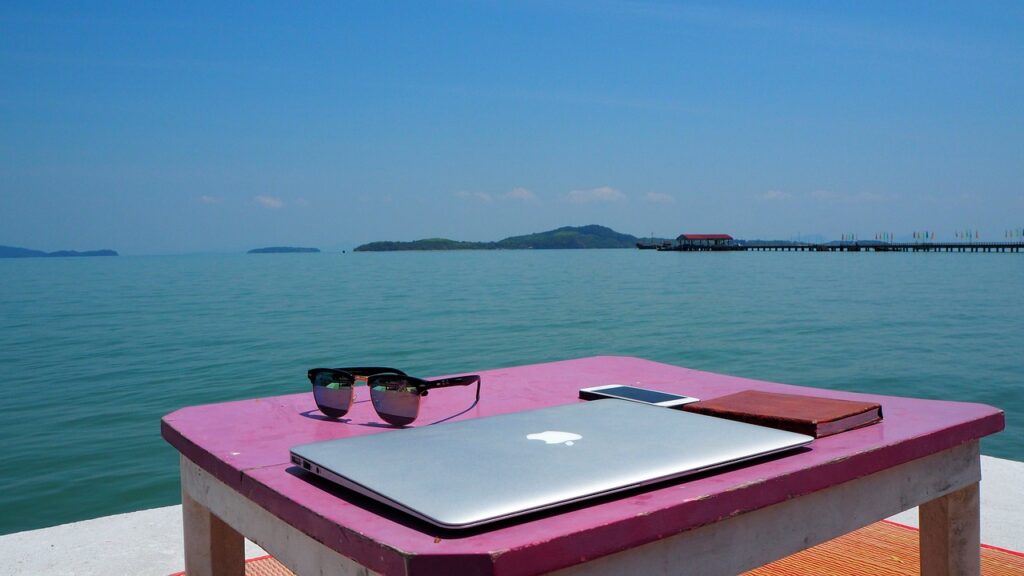
How To Hire Remote Staff
Due in large part to the events of 2020, today’s workforce is more mobile and tech-savvy than ever before. As remote work and virtual team setups continue to remain popular, more businesses are hiring remote staff — with many opting to hire freelancers over permanent employees.
Virtual employees, contractors, and other remote-based workers can help your small business save on office costs while increasing efficiency. With the right tools and processes, hiring remote workers can be a great experience for both you as an employer and for your current — and prospective — employees.
However, creating a virtual team with people you’ll likely never meet face-to-face requires a unique, tailored approach. As you’d expect, there are unique challenges to hiring remotely, and it can be tough to support a remote team — but this shouldn’t put you off! If you’re unfamiliar with the territory, don’t worry — below, we’ll discuss the best way to hire remote workers.
Why Hire Remotely?
Every company can benefit from remote hiring for a variety of reasons. Of course, the most obvious advantage is a greater number of candidates to choose from, giving you a better chance of matching the perfect employee to the role you’re recruiting for, but there are several other advantages to remote hiring — including:
- Cost savings — Compared to traditional recruitment methods, remote hiring is less expensive and more scalable. Recruiting in-house is time-consuming and costly: there are so many things to arrange practically, and selecting from a limited pool can delay the process, costing you money in lost productivity. Should you decide to go fully remote in the future, you can wave goodbye to any office-related outgoings, too.
- No need for employee relocation — With remote hiring, you can pick the best employees regardless of where they live. For example, it’s possible to hire talent from anywhere in the world with an employer of record service. By utilizing an EOR, you can focus on building the perfect team while your chosen provider handles payroll, benefits, taxes, stock, and local compliance (you can read more on the topic of EORs here: Employer of Record (EOR) Services | Remote).
- Employee retention — While it’s not directly related to recruiting new staff members, employee retention is important if you want to keep your current employees happy. After the events of 2020 and the resulting shift to hybrid/remote working standards, your team will expect the flexibility to work away from the office as a bare minimum, so enabling and supporting them to work remotely will help to keep them happy, engaged, and less likely to stray.
Decide Whether To Build A Global Team
Decide at the start whether sourcing employees from overseas is an avenue you’d like to explore. Doing so will dramatically increase the number of potential candidates for you to choose from, but it isn’t without its own set of challenges.
Of course, communication is key in a remote working environment, but this is especially true if you’re managing a global team. When deciding whether to add overseas talent to your business, consider the following key points:
- Do you have a consistent work culture? There’s nothing worse than feeling left out, lonely, or isolated. However, your overseas employees may end up feeling excluded if they’re unable to make it to in-person social events. Be prepared to mix things up and host some virtual events for your employees. This way, your remote workers can get to know their colleagues informally. For more information, check out our guide on cultivating company culture when your team is working remotely.
- Why do you want to hire globally? Make sure that you’re hiring remotely for the right reasons. Sourcing workers from abroad simply because they’re unlikely to expect much compensation for their efforts is ill-advised. No matter where your employees are located, ensure that they’re paid fairly, and hire them based on their skills and experience.
- Are you willing to accommodate different time zones? Building a customer support team with around-the-clock availability? Differing time zones may be a driving factor behind your decision to hire globally. However, an asynchronous approach may not be viable if your company relies on business-wide collaboration: just imagine the potential for disaster should any last-minute deadlines get sent through to a team member who’s currently fast asleep!
Create The Perfect Job Advertisement
Your job advertisement should paint a detailed (but concise) picture of the role. Craft the perfect ad, and you’ll save hours that could otherwise be wasted eliminating unsuitable candidates from your shortlist. Consider the following when tailoring your job listing:
- The job title — Make sure the job title is specific and descriptive. It should get to the point and tell applicants what the job involves, without being needlessly technical or verbose.
- The job description — The job description should give a thorough overview of the job duties. Include any special skills, tools, and requirements that are necessary to do the job effectively. If you’re particularly out of touch with the job itself, it could be worth asking any current employees to describe an average day in their position. You may then use these accounts as guidelines. Remember — the goal is to attract the right candidate, not the most candidates. Increasing the appeal of the position with false claims or exaggerations will only hurt your chances of finding the right person for the job.
- The work environment — Describe the work environment as it applies to the job. Include any details about the hours that the job requires. Do your team members all work to a specific schedule? Will they need to meet with you in person at any point throughout their employment? Will remote working equipment be provided/expensed? All these questions must be answered.
- The company culture — Few things are more formal than the hiring process, but this doesn’t mean your job listing should be completely void of personality. Remember, it’s your first chance to show your candidate what your company is all about. What does it stand for? How does your team like to unwind? Ensure your advertisement is branded with your company’s identity, just the same as its marketing material.
Optimize Your Interviewing Process
The hiring process is largely the same whether you’re recruiting in-house employees or remote workers, but there are a few things you should keep in mind when interviewing virtual candidates:
- Communication — Make sure you’re communicating with your potential employees in a way that lets them share their thoughts and ideas fully. Whether you decide to conduct interviews via phone or video, make sure you set up an environment that lets each candidate feel comfortable communicating their thoughts.
- Readability — Make sure your job posting and interview questions are written clearly and concisely. If you’re using software to manage your hiring process, make sure it’s intuitive and easy to navigate. Reassure your candidates that they’re free to ask for a demonstration if they’re confused — this is key if you want to maintain a level playing field for your applicants.
- Honesty — Virtual hiring can be a tricky thing. Candidates can’t see your office or meet your team, so make sure you’re honest about your hiring process, what it’s like to work for your company, and the kind of progress expected within the probationary period.
- Structured interviews — As a candidate, interviewing remotely is inherently easier. There’s no need for prolonged eye contact, formal handshakes, or even formal attire. This can make it harder for you, the hiring manager, to make your final decision. Plan accordingly and don’t be afraid to raise the heat if necessary. Prepare timed tasks, pose abstract questions or brain-teasers, and consider holding group interviews to create a greater sense of competition.
Ensure Your New Hire Has Everything They Need
Once you’ve decided on your perfect candidate, you’ll need to make sure they’re kitted out for the job. It should go without saying that communication should be your top priority, but this isn’t all there is to worry about:
- For meetings — Make sure all meetings include remote participants. A sensible, reliable pick is to host your meetings through Google Meet, but other popular options include Zoom or Microsoft Teams.
- For collaboration — Decide which collaboration tool will be used for remote work. There are many options, including Asana, Basecamp, Slack, and Google Docs. Ensure you are using the right tool for your team to work effectively together.
- For their physical workspace — Has your team member got a comfortable remote working setup? Do they have a suitable office chair, desk, keyboard and mouse? Do you need to provide a company laptop? These are all expenses that must be considered.
Finding your next employee isn’t a simple task, and competition from other companies can be stiff — especially if you’re recruiting in a sector that demands a high level of expertise. In these cases, the best bet is to cast the net as wide as possible, and remote hiring lets you do just that. If you’re yet to take the leap, what are you waiting for? Follow our tips above and you’ll soon be well on your way to hiring your next remote employee!







Responses